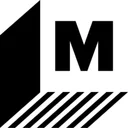Why I Stayed with the Same Mediocre Big Bank for 10-Plus Years
The inconvenience of switching banks shouldn’t outweigh the benefits you can receive from somewhere new.

Many, or all, of the products featured on this page are from our advertising partners who compensate us when you take certain actions on our website or click to take an action on their website. However, this does not influence our evaluations. Our opinions are our own. Here is a list of our partners and here's how we make money.
When you work in an industry like personal finance, it can be embarrassing to admit that you went against the best practices that you preach. But I’ll keep it real and confess that I stuck with a mediocre bank for years without seeking out something better. I was a customer at what I’ll refer to as Big Bank. (Yes, you’ve heard of its real name.)
My relationship with Big Bank began, as many mistakes do, in college. Big Bank had a branch on campus and I knew it had a large ATM network, but that was the extent of my research before I opened a checking and savings account.
I stuck with Big Bank for the next decade. I even added a couple of credit cards and an auto loan from Big Bank. It felt like a choice that would streamline my finances, with a variety of accounts available to me behind the same user login.
Over time, however, I became increasingly aware of the many ways that Big Bank was deficient. Better savings account interest rates were available elsewhere, as were credit cards with better cash back and rewards programs. But the inertia (and, to be honest, laziness) of not wanting to make the switch kept me at Big Bank for way longer than I should have been.
Making the switch
After I started working on the banking team at NerdWallet, I couldn’t feign ignorance or justify my inaction anymore. Based on the research I was doing every day, it was clear I was getting a raw deal, especially when it came to my savings. I slowly started to release the grip that Big Bank had on my finances by opening a new high-yield savings account at a different bank, and I re-routed a percentage of my paychecks into that account.
I immediately started earning literally hundreds of times more than the measly 0.01% annual percentage yield that I was getting at Big Bank. The interest rate at my new bank has fluctuated over the years since, from the lows of the pandemic to recent peaks, but even so, it’s stayed well above the abysmal rate I was getting before.
As I began exploring my options elsewhere and started opening other accounts, I still found it hard to give up on Big Bank for my checking. I had set up a legion of automatic payments for subscriptions and bills through that account, and the idea of transitioning everything over felt like a bridge too far, so I put it off.
But one day, in a surge of self-determination, I did what had been so hard for so many years: I spent five minutes opening a checking account at the same bank where I had my high-yield savings, and then I spent another five minutes switching over my direct deposit information.
Of course, it took a while to finally transfer all of my automatic payments and subscriptions to my new account, and it wasn’t the most convenient process. Leslie Beck, owner and principal at Compass Wealth Management, says this is by design.
“Banks try to make their services ‘sticky’ and make it as difficult as possible for you to leave them,” Beck says. She says she encourages her clients to gradually move recurring payments to the new account instead of rushing to do it all at once.
“It might make things a little more complicated for a period of time,” Beck says, “but it makes the process of moving things over more palatable.”
Choose your own banking adventure
If you’re considering making the jump from a suboptimal bank to a new and better one, keep in mind that you don’t necessarily have to make the switch all at once, or even completely switch at all. As long as you’re meeting the activity requirements and avoiding fees, it’s more than fine to keep accounts open at multiple banks.
Bill Shafransky, a senior wealth advisor with Moneco Advisors, recommends his clients take a “micro and macro” approach to their banking. He says that local, “micro” community banks tend to have more concierge-like customer service where the employees know you by name, and you might get better financing options for things like auto loans. Larger national “macro” banks, on the other hand, might have a better suite of products and services — especially for international travel — but might not have the personal touch of a smaller bank.
According to Shafransky, having both a micro and macro bank account can give customers a wide range of products, good customer service, and strong interest rates.
“It comes down to having options,” Shafransky says. “A lot of people don’t want a big institution or a small institution for different reasons, but having accounts at each can give you more freedom. It all comes down to what you’re looking for.”
Comparison shopping and mixing-and-matching your bank accounts can help you get the best of all worlds. Don’t settle for less than what you can get, especially in terms of interest rates and the services that you want from your bank.





